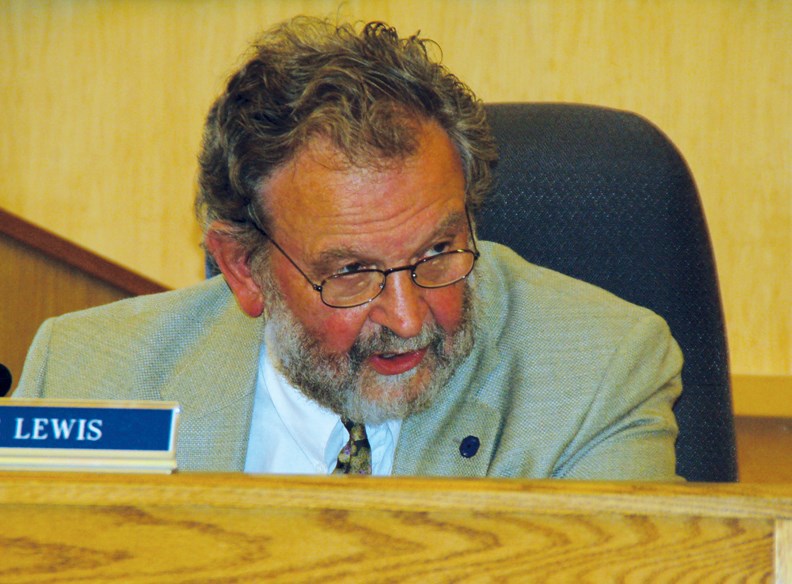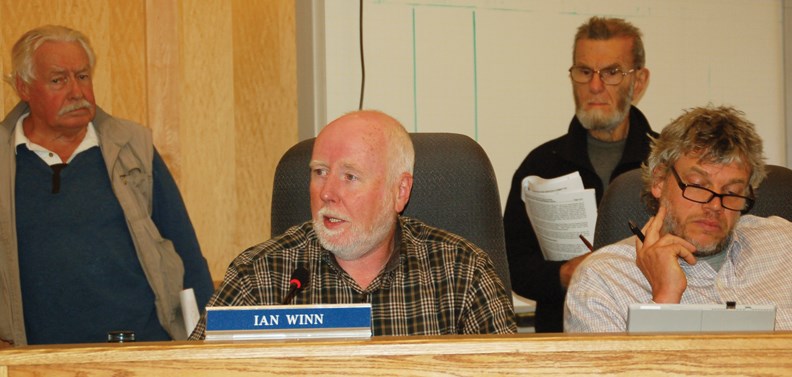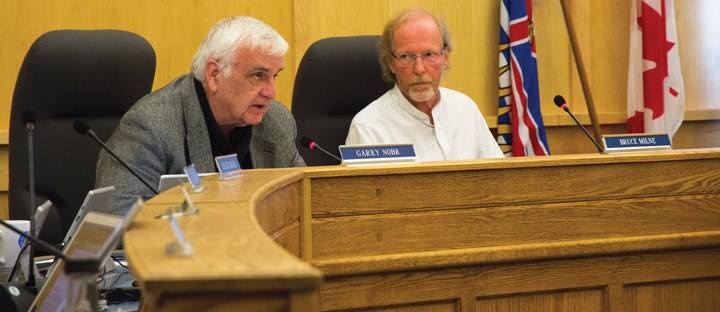Sunshine Coast Regional District (SCRD) directors voted in favour of deepening the channel at Chapman Lake for a backup emergency water supply at the Sept. 3 infrastructure services committee meeting.
This option – which still has to be ratified by the board and pass the design and budget approval process – will increase the depth of the channel between the Chapman Lake water supply and Chapman Creek by five metres.
The SCRD boardroom was past capacity for the meeting. A second room hooked up to the meeting’s live feed was offered as an alternative, but many chose to stay and sit on the floor or stand at the back of the room, including one pregnant woman and several seniors.
Area E (Elphinstone) director Lorne Lewis was the only committee member to vote against the option. He cited environmental concerns.

“If anything goes wrong with Chapman Creek, what’s the backup plan? We don’t have one,” Lewis said. “I’m skeptical as hell about deepening the channel because of the environmental impact it has on the lake.”
SCRD general manager of infrastructure services Bryan Shoji recommended the deeper channel option in his drought mitigation options report.
“What was envisioned in the concept is essentially digging out the channel, keeping the material onsite, putting in a pipe, and then covering the pipe,” Shoji explained. “From an engineering perspective I don’t see any issues with having two pipes at different elevations. It would just be an additional gate.”
Shoji said that an emergency siphon system will still be implemented for the rest of this year and remain until August 2016 while the channel is being dug down.
District of Sechelt director Bruce Milne, who chairs the committee, asked for clarification on the siphon system.
“Is there a difference between the siphon that we’re putting in now for emergency backup and a siphoning system that would be there for what you call a short-term source?” Milne asked.
“Technically no, depending on how this trial goes,” Shoji said. “We’re not recommending the siphon – it’s fine for emergency situations because it has to be staffed full time.”
According to Shoji’s report, the cost of operating a siphon is $40,000 annually. Deepening the channel would cost more initially – over $2 million – but only $5,000 annually.
Shoji explained that once the channel is deepened, the additional five metres would only be accessed in a Stage 4 drought.
“So it basically allows us to stay at Stage 3,” Shoji said. “The drought management plan process would remain the same – we would treat three metres as zero essentially. And only if an extreme drought like this year and in 2012 happens, then we would go into that additional capacity.”
The most popular long-term solution was to build an engineered lake. However, Milne said property rights on the engineered lake wouldn’t be secured until 2021.
Milne recommended moving up the timeline for establishing an engineered lake, but said a final completion date is so far into the future, an alternative secondary system should be looked into in the interim.
The committee voted to continue looking at long-term options for securing a secondary water source, such as the Chapman aquifer, Clowhom and Sakinaw lakes – although, Milne pointed out, previous SCRD boards have rejected these options.
Many on the committee spoke in favour of water meters, including Area D (Roberts Creek) director Mark Lebbell.
“We are reaching a point where our growth and our consumption and the effects of climate change are interacting in a way that is evident to all of us,” Lebbell said.
“We’ve shown this summer that we can adapt – the community can adapt. Meters with conservation based rates will make that adaptation more efficient,” Lebbell said. “It will provide incentives for folks, it will provide data and it’s a recognized best practice in terms of conservation.”
Milne said he is 100 per cent in favour of water meters, but added that he doesn’t want them to be used to discriminate based on wealth.
“I feel very strongly that water should not be turned into a commodity and shouldn’t be priced out of general available use based on your income,” Milne said.
Area F (West Howe Sound) director Ian Winn also came out in favour of deepening the channel as well as water meters. Winn’s reason for wanting to implement meters is to identify leaks in the water system.

“Why would we take such a precious resource and not only not use it, but also incur all of the costs associated with treating it and moving it through our infrastructure?” Winn asked. “Just so that it can disappear out of some crack in a pipe somewhere that we don’t know?
“The metering system will be able to provide the data that we need to isolate and find out where those leaks are. The costs are significant if we don’t do it,” Winn said.
Milne noted there are 23,000 people on the Chapman water system; about 10,000 of them live in Sechelt.
“The hurt and pain in people’s lives in terms of the quality of life they expected to have here and what they’ve had this summer, has just been devastating,” Milne said. “People cry when their gardens die; when plants and shrubs and landscaping they’ve put in place for years disappears.
“We simply can’t afford to go through another summer like this, and all the climatologists are telling us to brace ourselves, this was just the beginning,” Milne added. “We can expect next summer Stage 4 at about the same time, for the same reason.”



